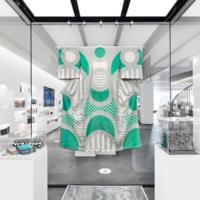Concerning the Feb. 4 article "Yasukuni: It's open to interpretation": I would like to add a few historic facts. Yasukuni is barely understood in its historic context. It is not just a memorial for the war dead! In the middle of the 19th century the modern nation of Japan was modeled according to the traditional concept of an iemoto or extended family.
At the center of this concept of family nation, called kokutai shugi, was the emperor, who became the ruler, father and god of his subjects, who were considered related branches of the imperial family. The Western concept of "public" was translated into Japanese as oyake, meaning great or imperial household. The Japanese preoccupation with blood types started at this time in order to create a fictional blood relation among the Japanese race.
The souls that were enshrined at Yasukuni and became guardian spirits of the nation (just as ancestors in a regular family) had given their lives for the emperor (or nation).
Kokutai shugi eventually became the core of an ultra-nationalist ideology under which freedom was suppressed at home, and war and agony spread to neighboring countries, namely Korea and China. While it could be said that most of the over 2.5 million souls enshrined at Yasukuni were victims of a religiously trimmed nationalism themselves, it should also be remembered that on their way to "sainthood," they caused the untimely deaths of more than 10 times as many of their Asian neighbors.
The Nazis would have been glad to be able to add such a powerful religious tool to their propaganda. Can you imagine the outcry today if German leaders still venerated an institution that was instrumental in implementing Nazi propaganda?
How credible is an apology by a Japanese prime minister if half of his Cabinet visit Yasukuni the very next day, as has happened several times?
Germany's Adolf Hitler was gone after the war. The Germans could blame everything on him, which at least offered the opportunity to make a clear cut with the past. Here in Japan, individual responsibility is inherently very blurred. Even to discuss the responsibility of the emperor is taboo.
Yasukuni is a relict of Japan's state Shinto (kokka shinto), a tradition invented in the second half of the 19th century. If anyone tells you that Yasukuni is part of the Japanese tradition, just ask that person if there are any comparable Shinto shrines.
The opinions expressed in this letter to the editor are the writer's own and do not necessarily reflect the policies of The Japan Times.

















With your current subscription plan you can comment on stories. However, before writing your first comment, please create a display name in the Profile section of your subscriber account page.